 Life & Style
Life & Style

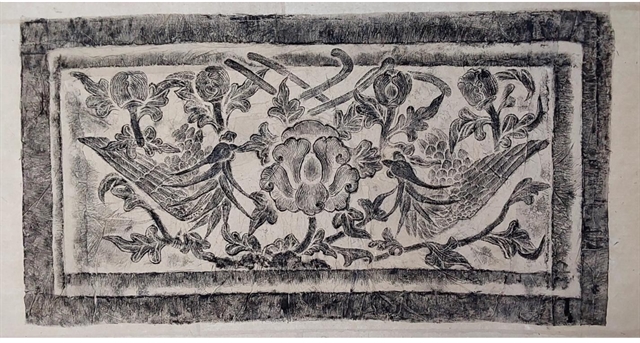 |
| A rubbing of a phoenix and chrysanthemum pattern carved in 17th century on Báo Nghiêm Tower, Bút Tháp Pagoda in Bắc Ninh Province. Photos courtesy of VNUFA |
HÀ NỘI An exhibition featuring the beauty and importance of rubbing art in artistic creations and research opens today at the Việt Nam University of Fine Arts (VNUFA) in Hà Nội.
The event, organised by the VNUFA's Faculty of Art Theory, History and Criticism, is part of a series of activities to celebrate the university's 100th founding anniversary (1925-2025) and the faculty's 47 years of establishment.
It showcases 50 outstanding rubbings created by generations of lecturers and students at the faculty, many of them have become researchers with important contributions to current fine arts research and creation.
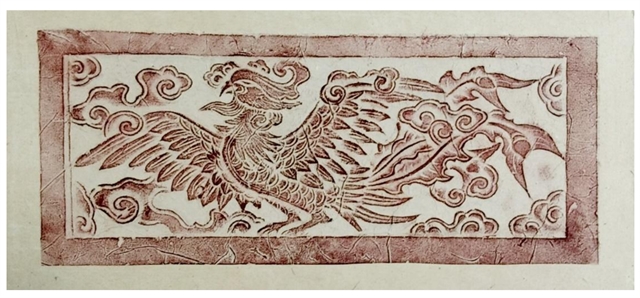 |
| A rubbing of a phoenix design of Lê Thời Hải tomb stele (18th century) in the northern central province of Thanh Hóa. Photo courtesy of the VNUFA |
Along with the rubbings are a number of scientific research projects on the role of rubbing methods in fine arts to be displayed at the event. Some of the projects have been carried out and published as books.
The exhibition which will last until the end of this month at 42 Yết Kiêu Street, Hoàn Kiếm Ward, aims to further affirm the important role of artistic rubbing in art research, according to the organiser.
Many cultural activities will also take place during the exhibition offering viewers with interesting experience such as a practice of rubbing on August 23 and August 30, a workshop discussing the role and technique of rubbing (frottage) in current art research and creation.
With this exhibition and through its training and research programmes, the organiser - the VNUFA's Faculty of Art Theory, History and Criticism - hopes to 'build a bridge to connect the past to the future' for VNUFA's generations of students and artists, at the same time create inspiration for art lovers.
"In the current social context, it also helps confirm that systematic research on the artistic heritages of our ancestors from hundreds of years ago is an urgent task to affirm the identity of Vietnamese fine arts and culture," the organiser said in a statement sent to Việt Nam News and Law.
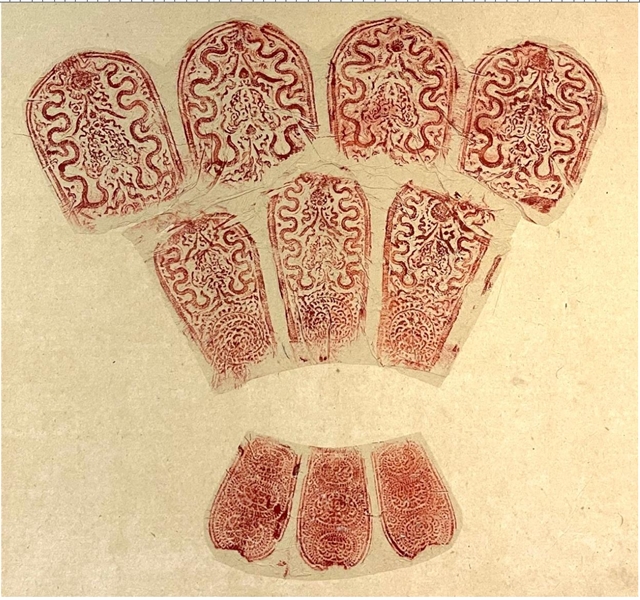 |
| A rubbing of a lotus petal decoration for the pedestal of the Buddha statue (12th century) at Ngô Xá Pagoda in Ninh Bình Province. |
Associate Professor Trang Thanh Hiền, PhD, deputy head of the Faculty of Art Theory, History and Criticism, said: “This exhibition is an opportunity to review a research method that has accompanied the the faculty's training tradition, and at the same time build a bridge between theory and practice, between the past and the present.
"We hope that, from the values restored and reproduced through the artistic rubbings, more creations bearing the impression of Vietnamese culture will be continued and developed in the future."
Within the framework of the exhibition, a monograph on rubbing art techniques will be launched, collecting typical designs of ancient Vietnamese fine arts from the 11th to the early 20th century.
"The book is the result of many years of serious research, practice and teaching at the faculty. It not only introduces rubbing techniques in a scientific direction, but also affirms the role of rubbing art as an important method in the research and teaching of ancient fine arts,” Hiền added.
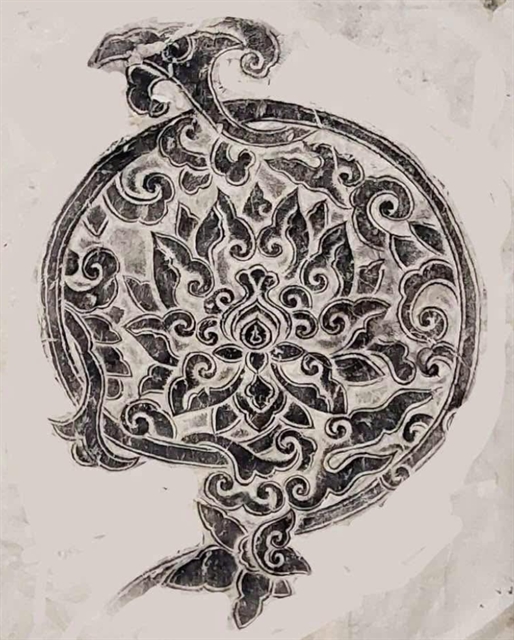 |
| A rubbing of a 15th century lotus design in Lam Kinh Relic Site in Thanh Hóa Province. |
Associate Professor Quách Thị Ngọc An, a VNUFA alumni and currently a lecturer at the National University of Arts Education, said: “I began to study and practice the patterning technique since I was a student.
"This method has become a research tool throughout my academic process from my university graduation thesis to later use in my own work. It has helped me carry out a number of scientific researches, from my doctoral thesis to published monographs.
"For me, the method not only helps preserve ancient patterns and motifs, but also is a linkage for researchers directly interact with relics and absorb aesthetic and spiritual values of the ancestors.
"It is the foundation for forming in-depth research thoughts, and at the same time used as a document for teaching and studying traditional art creativity in contemporary fine arts.”
Field trips, she said, especially the rubbing work at ancient architectural relics, have brought her extremely valuable experiences.
"Every time I practice print patterning directly at the relics, I can not only observe clearly each line of ancient patterns but also feel the depth of culture and the imprint of history. Practicing rubbing art helps me get closer to traditional aesthetic values, while also creating creative inspiration with traditional influences in my future personal projects," Linh said.
Lê Thị Tiềm, an alumni and currently a lecturer at the Faculty of Theory, History and Art Criticism, said: "Printing designs at relics is a particularly important method in the process of teaching and researching ancient art.
"When students are directly making rubbings from stone steles, bronze bells, baked bricks, wooden architecture at relics, they can approach historical and aesthetic values in a visual, vivid and practical way. Poonah paper rubbings preserve and reproduce the typical motifs and patterns of each dynasty, expressing the creative thinking and aesthetic concepts of our ancestors.
"These are valuable documents for analysing, researching and restoring the historical and cultural contexts."
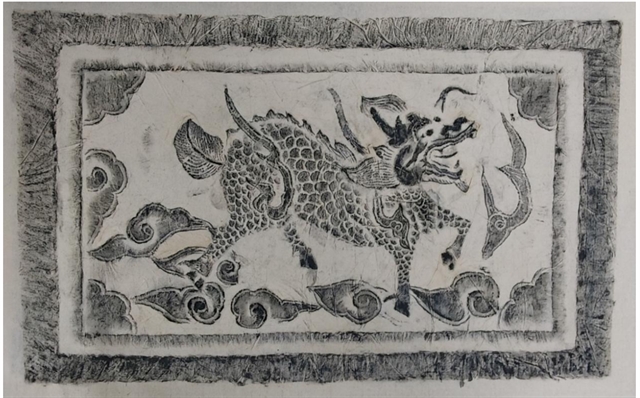 |
| A 17th century stone railing pattern at Bút Tháp Pagoda in Bắc Ninh Province. |
The rubbing art method was first introduced to Việt Nam by the French with an initial purpose to create 1/1 printed specimens from the stele inscriptions.
It helps researchers continue to do more in-depth research after fieldwork at the site, taking photos and measurements to obtain standard specimens.
In the past, while classifying Việt Nam's historical and cultural relics, the French School of the Far East [EFEO] made multiple steles rubbings. This massive system of stele heritage has now become valuable documents for researchers.
In 1962, the Institute of Fine Arts was established. Following the French, the then art researchers, during their field trips to study the history of Vietnamese art, used this method to systematise decorative designs on stone, ceramics, and wood at Vietnamese art relics.
 |
| Decorative pattern of a 17th century stele forehead at Đào Quang Nhiêu Temple in Hà Nội. |
In 1978, when the Faculty of Art Theory and History was established, along with theoretical training programme, internship activities at historical relics were highly emphasised.
The method of rubbing does not stop at taking samples for research. The rubbings can become pictures with "Vietnamese soul' through the hands of researchers, who are also artists. VNS




